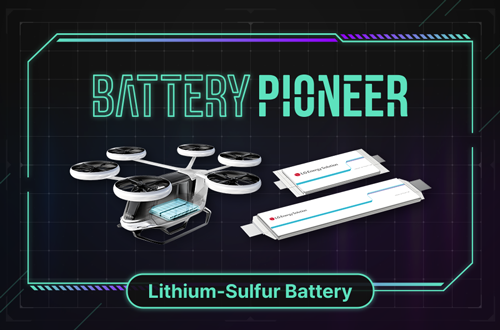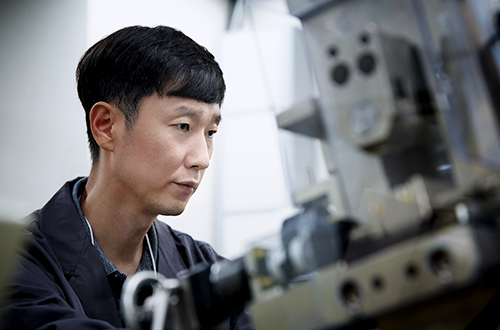The battery electrode manufacturing process begins with mixing active materials. The resulting slurries are coated onto the foils and dried, and then comes the roll pressing. Also called the rolling process, this is a process where the electrode goes through two rolls and gets evenly flattened.
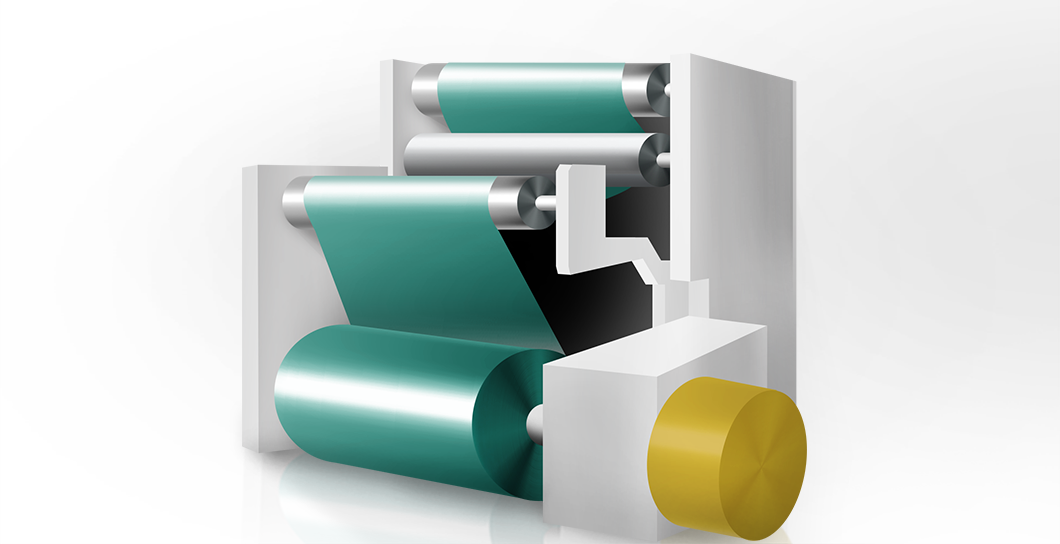
What is Roll Pressing?
Roll pressing determines battery electrode density, performance, and surface quality. Two big rolls press the electrode from both sides, spreading it thinly and boosting its density. In doing so, the electrode surface bonds to active materials* better, allowing lithium ions to travel more easily through the well-connected surface and materials. As a result, the output and performance of the electrode improve.
*Active material: Common cathode active materials include lithium-nickel-cobalt-manganese-oxides (NCMs) and lithium iron phosphate (LFP) while graphite and silicon are widely used for anode active materials.

Mixture density
This process contains what determines the electrode density: the mixture density. The “Mixture” refers to a slurry in which active materials, conductive additives, and binders are mixed, while the “mixture density” refers to how well the materials are pressed (g/cc). For a graphite anode, the mixture density is set to be lower than in the cathode because its weak crystal structure makes it fragile under high pressure.
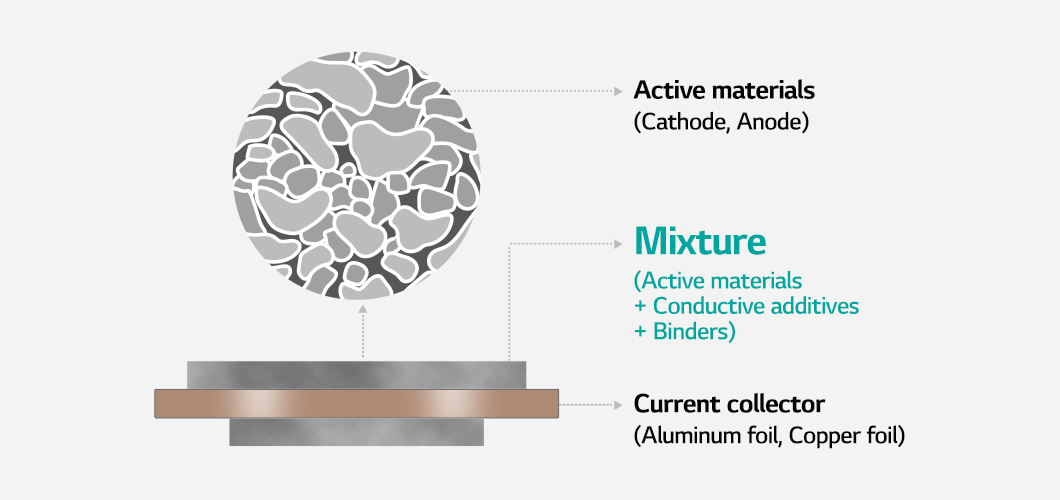
Rolling mill
A rolling mill used for the roll pressing process consists of working rolls that press the materials directly and back-up rolls that add pressure on the former. The more the number of rolls, the more sophisticated the rolling mill is. However, in manufacturing batteries, there are just a pair of rollers with the same diameter each at the top and bottom.
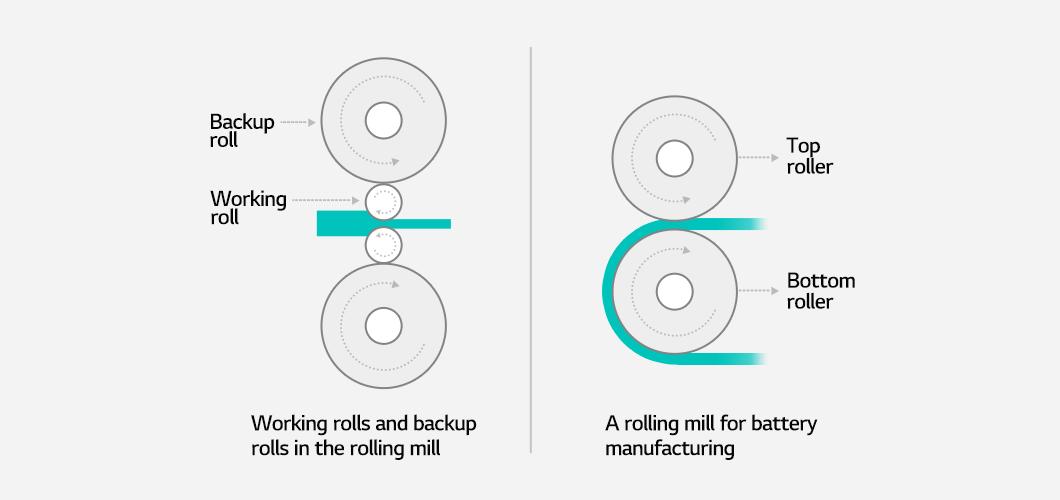
The flattened electrode is now ready to be cut to the desired battery size. Next is the last step of the electrode manufacturing, slitting and notching! See you there!

